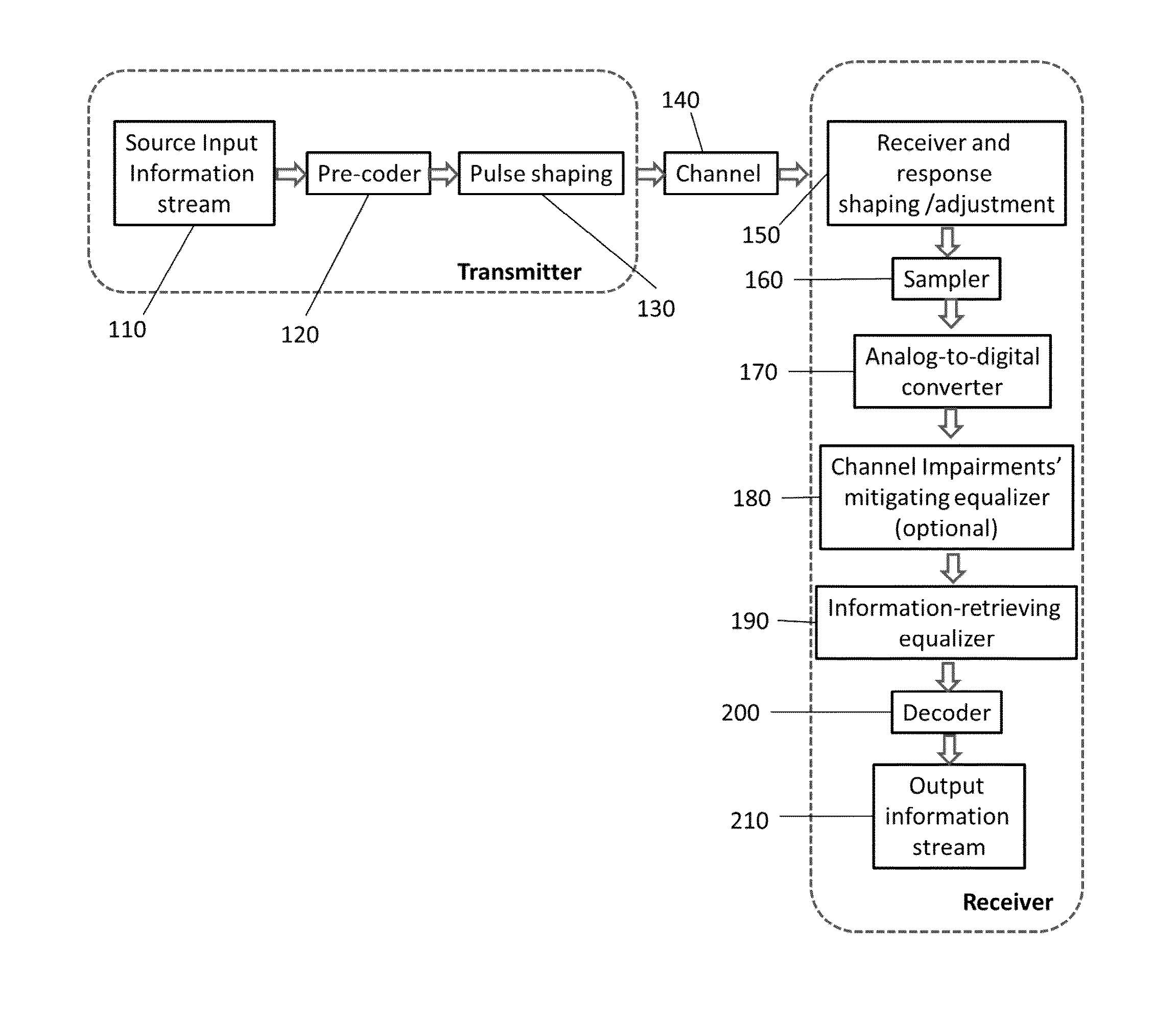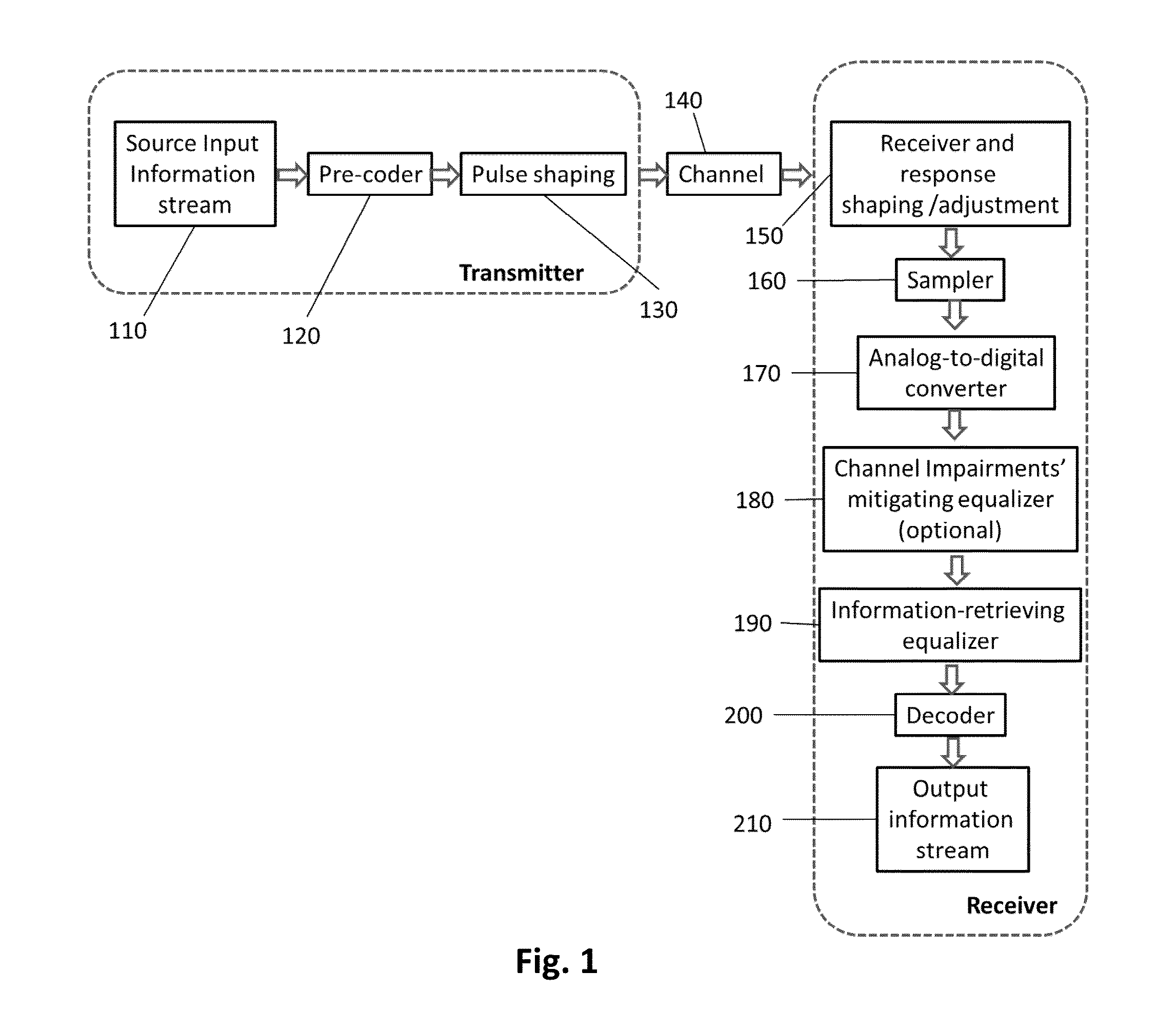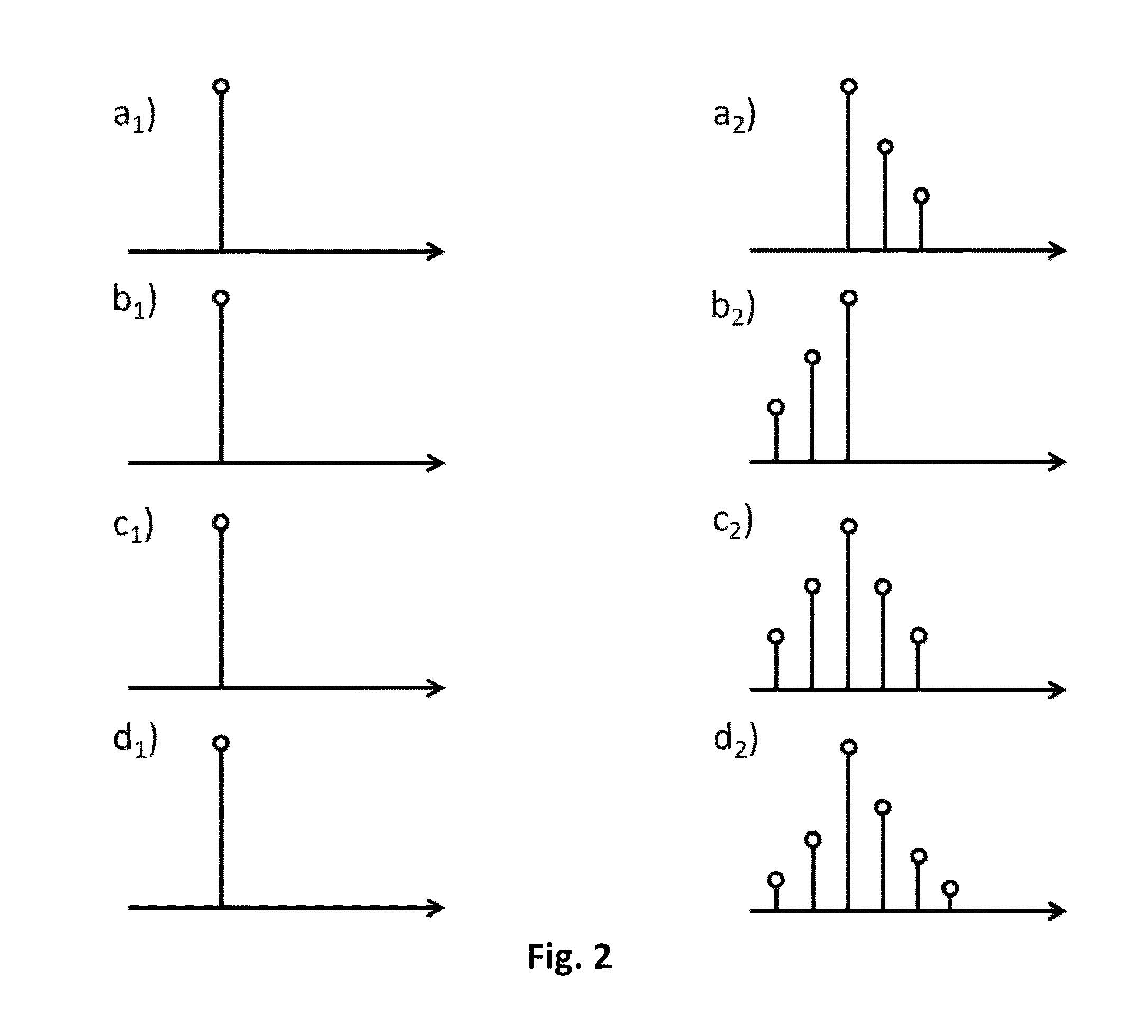Method for reducing equalizer complexity in communication links
a technology of communication link and equalizer, applied in the field of communication system, can solve the problems of high power consumption, inability to meet the needs of the industry, and increase the power dissipation of the equalizer and the communication system as a whole, and achieve the effect of reducing the complexity of the equalization structur
- Summary
- Abstract
- Description
- Claims
- Application Information
AI Technical Summary
Benefits of technology
Problems solved by technology
Method used
Image
Examples
Embodiment Construction
[0019]The present invention is directed to reduction of equalizer complexity in communication systems with intersymbol interference and in particular to bandwidth constrained equalized transport (BCET) systems.
[0020]In the preferred embodiment of the invention, assuming the bandwidth constraint causes a spread of a single input symbol to L symbol slots (L being an integer number), as an example, for an M-symbol alphabet communication system input, the total number of output responses (not necessarily all distinct) will be M raised to the power of L (ML), and the total channel response length equalizer will have to operate on the total memory length of the channel in terms of the number of symbol slots (i.e. L), whereas the equalizer complexity is related to that memory length and can range from a linear to e.g. exponential dependence on the length of the channel spread.
[0021]The receiving equalizers for small fractional bandwidth constraint systems are often, but not exclusively, re...
PUM
 Login to View More
Login to View More Abstract
Description
Claims
Application Information
 Login to View More
Login to View More - R&D
- Intellectual Property
- Life Sciences
- Materials
- Tech Scout
- Unparalleled Data Quality
- Higher Quality Content
- 60% Fewer Hallucinations
Browse by: Latest US Patents, China's latest patents, Technical Efficacy Thesaurus, Application Domain, Technology Topic, Popular Technical Reports.
© 2025 PatSnap. All rights reserved.Legal|Privacy policy|Modern Slavery Act Transparency Statement|Sitemap|About US| Contact US: help@patsnap.com



